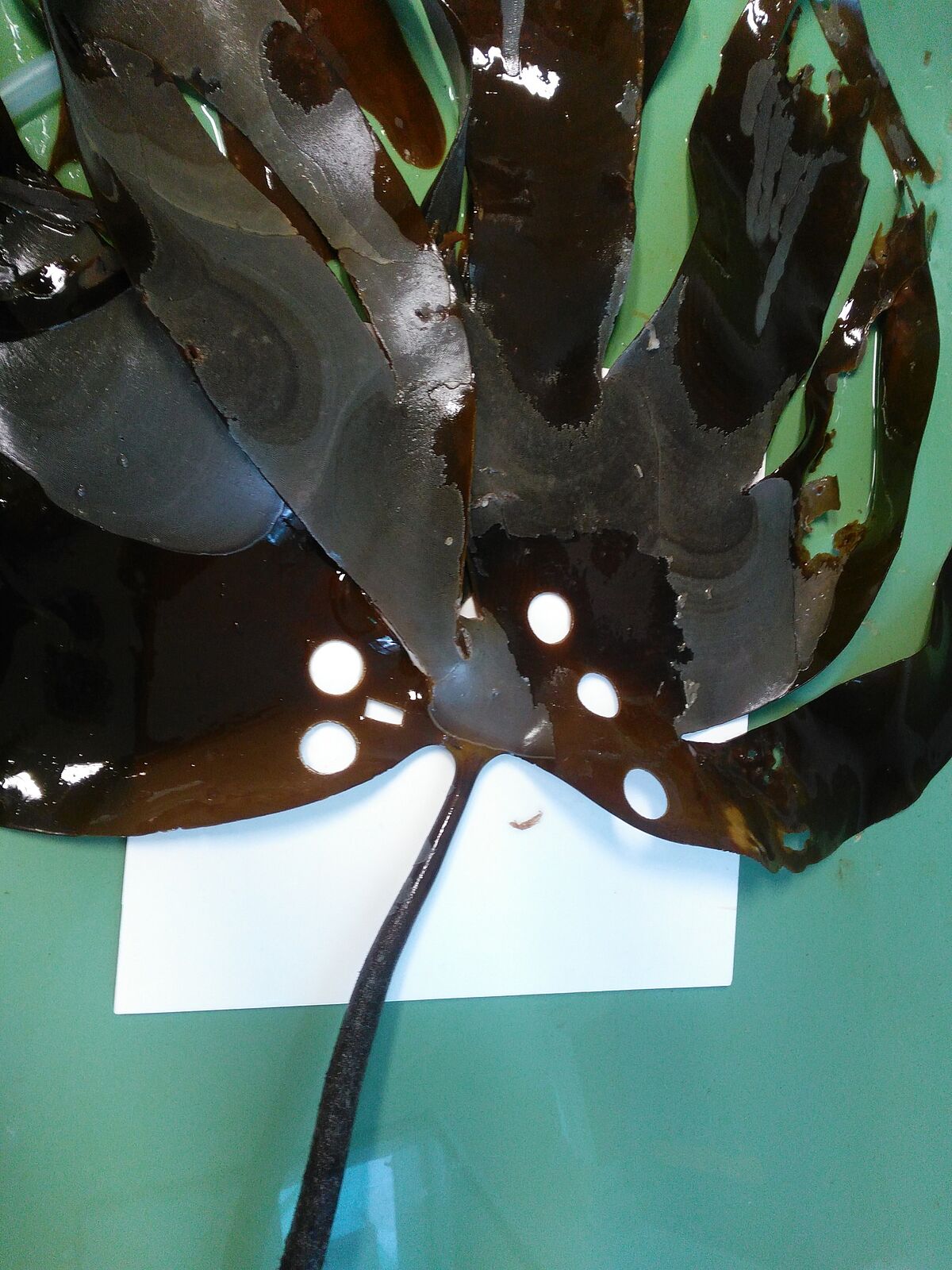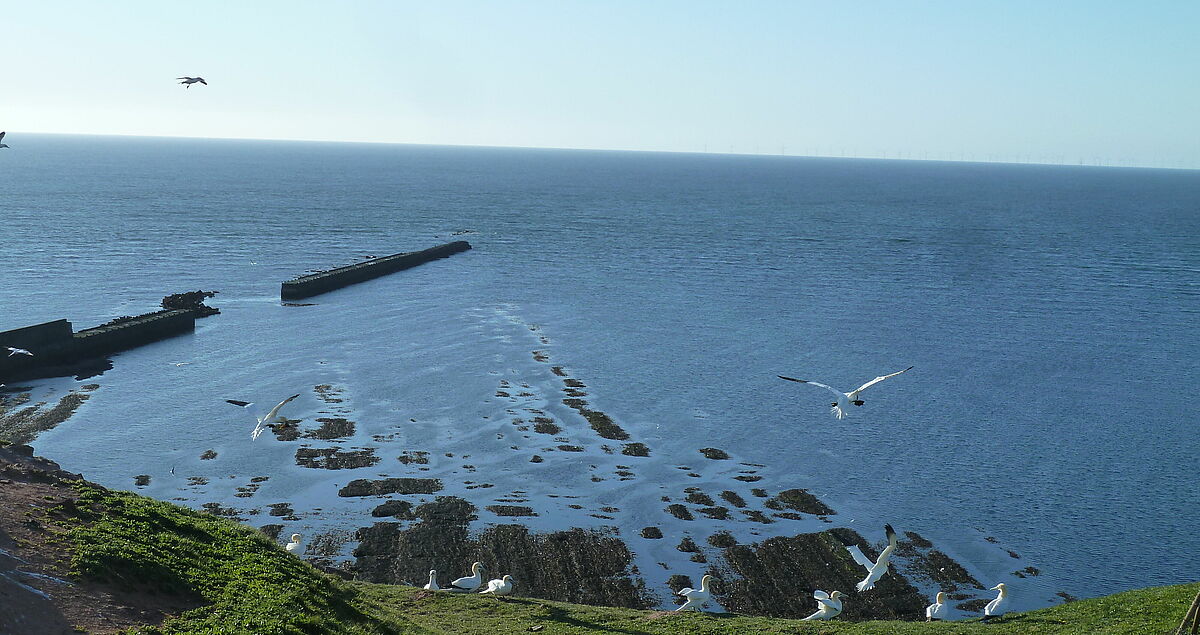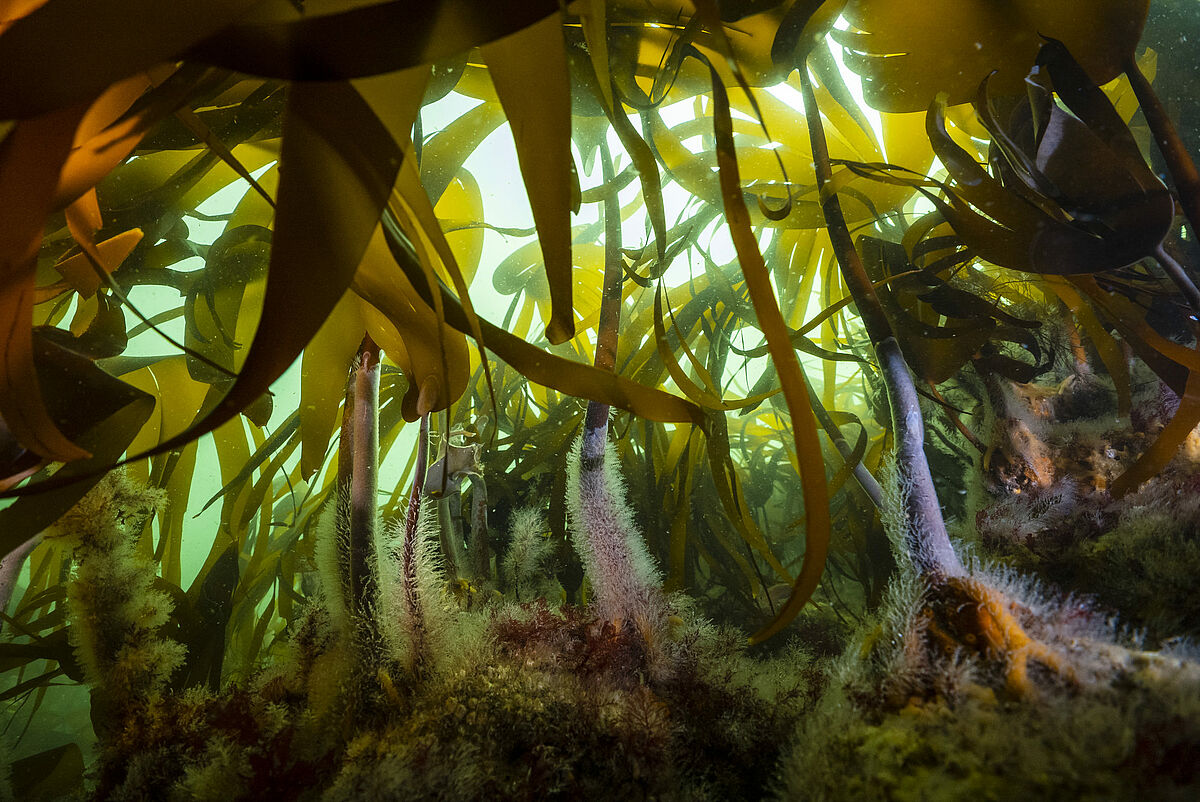Seasonal kelp primary production at a rocky shore site: Integrating physiology and biochemistry into ecological modelling



The DFG funded project aims to investigate submarine kelp forests (Laminaria hyperborea) along a rocky coast site (Helgoland) with regard to their carbon input. So far, primary production can only be roughly projected due to the limited number of datasets. Furthermore, the effect of ocean warming on primary production will be investigated. The seasonal changes in primary production and carbon budget will be analysed with a combination of different physiological and biochemical methods. The gathered data will be combined with already existing data to develop a kelp primary production model for rocky shore habitats.
Project details
Kelp forests are important primary producers in the oceans. Due to their fast growth and high biomass production, kelps have a strong impact on coastal ecosystems. However, no clear statement can be made about primary production of rocky sites due to the lack of data. Helgoland is a German island located in the southern North Sea. This island is a hotspot for biodiversity and primary production and a unique habitat for kelp forests. The kelp, Laminaria hyperborea, is the dominant species around Helgoland and will be investigated in the project.
By combination of physiological and biochemical methods, primary production data will be sampled during all four seasons. These data will be combined with already existing data for a regional physiological kelp primary production model. This model could be applied to other rocky coast sites around the world for a better estimation of primary production in these ecosystems.
In addition to the seasonal aspect, the project will focus also on ocean warming. Kelp forests are adapted to low temperature and are thus threatened by ocean warming. Future scenarios will be predicted by systematic temperature increases during the experimental phase, which will be included into the model.
The project will be conducted in cooperation with the Alfred Wegener Institute, Helmholtz Center for Polar and Marine Research Bremerhaven and with the University of Málaga (Spain).
The major tasks will be:
- Derivation of photosynthetic quotient through combined parallel measurements of oxygen production and carbon fixation rates.
- Determination of primary production rates, carbon budget and carbon storage as a function of seasonally fluctuating environmental factors.
- Comparison of differences of production rates derived from measured photosynthetic rates and from changes in in situ biomass.

Responsible persons
M.Sc. Kiara Franke (Applied Ecology and Phycology, University of Rostock)
Dr. Angelika Graiff (Angewandte Ökologie und Phykologie, Universität Rostock)
Dr. Inka Bartsch (Alfred-Wegener-Institut, Bremerhaven)
Prof. Dr. Ulf Karsten (Applied Ecology and Phycology, University of Rostock)
Applicants
Dr. Angelika Graiff
Funding
Deutsche Forschungsgemeinschaft
Funding number
GR 5088/2-1
Funding Period
2020 – 2023
Cooperation partners
Prof. Dr. Francisco Gordillo, Dr. Concepción Iñíguez Moreno, Dr. Anja Eggert
